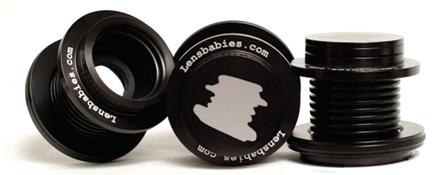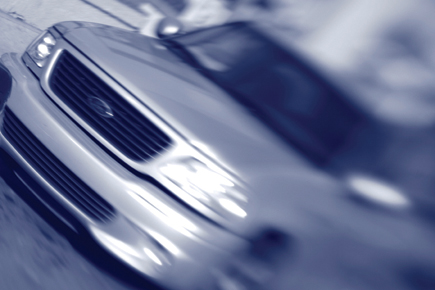The Original Lensbaby
Having Fun With Distortion And Soft Focus
Photos © 2004, Joe Farace, All Rights Reserved
The Original Lensbaby is a flexible camera lens that creates an image that has an area of sharp--or not--focus that's surrounded by a graduated blur. This mostly plastic lens is available in different camera mounts and brings the "Holga look" (see What's a Holga Anyway? sidebar) to single lens reflex cameras while adding more creative control. When used with digital SLRs you'll see the effects right away, so if you don't get exactly what you want the first time, you can try and try again.

When using a Lensbaby, you shift the in-focus area by bending the flexible lens
tube in any direction using a technique that can vary from photographer to photographer,
but involves wrapping your fingers around the lens like you were smoking a cigar.
(Hey, I quit 20 years ago.) The further you move the lens up, down, left, or
right, this area of sharpness shifts, producing blurring and prismatic color
distortions in the rest of the image. You can control the size of the sharpest
(don't get carried away with the word "sharp" when talking
about Lensbabies) area and the overall level of blur by using one of four aperture
settings: f/2.8, f/4, f/5.6, and f/8. This is accomplished by replacing the
aperture ring--it looks like a washer to me--and replacing it with
another one. Four are provided, including f/2.8, f/4, f/5.6, and f/8, but, like
me, you'll find one you like, and please just leave it in there.
No matter how you stretch a Lensbaby, it's digital fun for less than $100.
Instead of telling you how all this works, let me show you how I used it with
Canon's EOS 20D digital SLR mostly with the f/4 aperture ring.
I Can Do That In Photoshop!
The classic postproduction way of achieving the same effect I produced in camera
by using a Lensbaby is produced by creating a duplicate layer (Layer>Duplicate
Layer) then adding Motion Blur (Filters>Blur>Motion Blur). Using the EOS
20D's
built-in toning function, I captured the blue truck as a monochrome image while
adding a blue tone in camera. Capturing the picture on the card that you have
in your mind means you can make 4x6 prints on the spot with direct-from-card
printers such as Epson's boom box-shaped PictureMate.

It's OK If You Like Distortion
Excuse me? Contrary to what some gurus will tell you I don't think there
are any rules in photography. If you make pictures for yourself, then make them
to have fun. This photograph of a local church was made using the EOS 20D's
in camera sepia toning and the blur created by the Lensbaby adds, what I feel
anyway, is a romantic, pictorial touch to what would be an ordinary photo of
a neighborhood church. The camera was set in Aperture Preferred (Av) mode, which
is the best way to use a Lensbaby, since the apertures are fixed once you stick
the "washer" in. I let the EOS 20D determine the shutter speed,
which was 1/1250 sec at ISO 100, and, if needed, tweaked exposure using the
camera's Exposure Compensation setting.

Soft-Focus Portraits
With all respect to the ghosts of the f64 Group, sharp focus isn't an
expression of perfection. It's just another technique that's available
for use by the creative photographer. Soft focus has been around as long as
the Zone System, and, I think, just as valid a technique, especially for portraiture.
This soft-focus portrait of my wife, Mary, was made using only the light from
a table lamp. The camera was set in Av mode at ISO 1600 with a shutter speed
of 1/10 sec, which means that if nothing in the image is really sharp, it's
probably due to camera movement. Using a tripod may have sharpened Mary's
eyes, but would have drained the spontaneity of the moment from the experience.

































